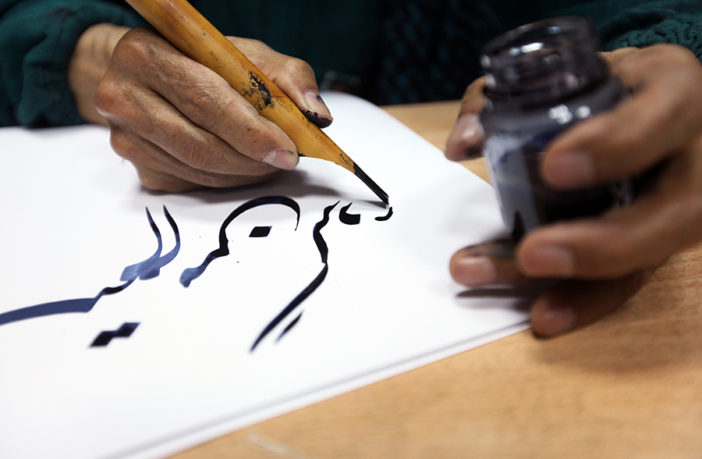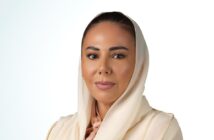SEHAM ALMUBARAK, Founder of Takleem
Robert Alan said “Cultural differences should not separate us from each other, but rather cultural diversity brings a collective strength that can benefit all of humanity.” Adding a new way of communication to your life is a part of growth, and that’s why at Takleem, we focus on taking you on an intellectual journey. In this article, you will learn more about the Arabic language’s origin and its history that will encourage you to the most beneficial exposure.
The language definition – what are the roots?
For many years, historians determined the origin of language as “the sound” that we hear with our ears and then proceed to speak in order to express our thoughts and feelings. However, language is not only the sound and speech, but rather, it is also our thinking, along with our rationale and our mind. It is what distinguishes human from animal. Therefore, languages, in general, express the great capabilities of humans and how we communicate and interact with each other, resulting in the creation of an original culture. For this reason, language is firmly identified with the way of life, and we cannot separate them. The primary tool to unlock your understanding of a culture is to become familiar with its language.
How is the origin of the Arabic language associated with the Islamic religion?
Truth be told, historians have not yet been able to completely comprehend the origin of the Arabic language. Yet, some have said that it is the language of Adam in Heaven, where Allah quoted in the Qur’an: “Allah taught Adam the names – all of them in the language”. Before the Islamic religion, the Arabic language was historically associated to the sixth century Quraysh tribe (individuals who were living in Makkah), as they used to speak it. Their accent was distinguished because of its correctness, beauty, and the absence of errors compared to other Arab people’s dialects. In the seventh century, Allah sent the Holy Quran to Prophet Muhammad – Peace be upon him.
The Arabic culture and language – how did it all start?
As the Quraysh was recognized by their grasp of the Arabic language, their proficiency and dominant abilities in it were advanced. As such, they gave the Arabic language esteemed importance and held a linguistic conference every year called “Souk Okaz”, at a place between Makkah and Taif. Here, poets and preachers were gathered and competed amongst each other, and a judgment board of trustees was appointed to choose the winners. As challenging as it may appear, the Prophet Muhammad was sent to oppose them with this language, with the skill that they were most proficient in. Once he started voicing out the language of the Quran, some members claimed that he was a magician, or that He was just a poet, because the language he spoke was beyond their genius.
From that moment, the Qur’an became the miracle of the Prophet Muhammad. And this miracle is not seen with the eyes, but rather came to challenge the mind through listening! Thus, language is what distinguishes a human by his mind, and the first sense by which a person can learn any language, is through listening.
In sum, the Arabic language originated from the Quraysh and was used as a challenge and a miracle of the Prophet Muhammad. After that, Arabic became the official language of Muslims, and all of the Islamic texts were written in it, along with all of the grammatical Arabic language rules taken from the Holy Qur’an as it is fully correct, complete, and error free. Then, Arabic became the language of Islamic civilization and Arab culture, reflecting Arabic literature and art as well.
How did Arabic letters develop?
It may come as a surprise that the Arabic letters did not contain dots and symbols like “Fathah,” “Kasrah,” and “Thammah”, as the present letters do. They had to be adjusted due to the wide spreading of Islam during the seventh century, where a great deal of people entered the religion of Islam. Each of these people began to read the Qur’an with different pronunciations, resulting in misinterpretations in the readers’ minds. This triggered a fear in Prophet Muhammad’s companions, that it would become a widespread habit for people to understand the meaning of the text incorrectly. Hence, they formulated a solution for this conflict, to preserve the Qur’an from changes.
Why were dots added to the Arabic letters?
Dots were placed on the letters to differentiate between similar letters such as “Ba”, “Ta” and “Ya”, and the symbols drawn on the letters were invented to help to pronounce the word in a correct manner as it is in the Qur’an.
How did dialects form?
The Arabic language spread widely after Islam – because it was the language of literature, science, and culture, it encouraged non-Muslims to learn Arabic to translate many Arabic sciences into other dialects. The mixing between Arabs with other people such as Persians, Romans, Indians, and so on, resulted in the mixing of new words from other languages into the Arabic language. Some Arabs began to make “mistakes” in pronunciation. We call the mistake of language in Arabic, “laHn”, although is it not a mistake because it is understood, yet it is not stated in the Quran. Therefore, Arabs accepted the changes that occurred in informal conversations and different dialects were created based on country and region. As a matter of fact, Saudis speak more than one dialect, but in general, there is little difference. The differences comprise of only a few words.
Classifications of the Arabic language
▪ Classical Arabic is the language which the Qur’an was revealed in, and is flawless, complete, and correct. The Arabs used it in the past in poetry and through the books of Arabic literature, the Sunnah, and books of science.
▪ Official Arabic is used in the Arab world in education, media and conferences.
▪ Colloquial Arabic is spoken by Arabs with different dialects according to their country and city.
The richness of the Arabic language
Arabic is a language that may have its own unique rules, pronunciation, and grammar – therefore, special words may have the same letters, but they have extra or missing letters. However, if you look at these names in the English language, all of the grammar is completely different.
How Arabic influences other languages around the world
Throughout centuries, many languages have borrowed directly from the Arabic vocabulary or through other languages influenced by the Arabic dialect, giving the Arabic expressions an original and authentic credit. Knowing the history of Arabic, culture, and language enables you to understand the roots of any other languages of the world. It is one of the strongest pillars of writing and reading.
The Arabic language is one of the most fascinating and widely spoken languages in the world. If you are in Saudi Arabia, it’s best to learn the language as it not only helps you to communicate with other people, but it is also a way to immerse in the culture of the Kingdom.
If you want to discover its beauty and dive into its depths, let Takleem — a platform for Arabic language learning for non-native speakers, take you on an unforgettable learning journey that will help you achieve your Arabic learning goals.




